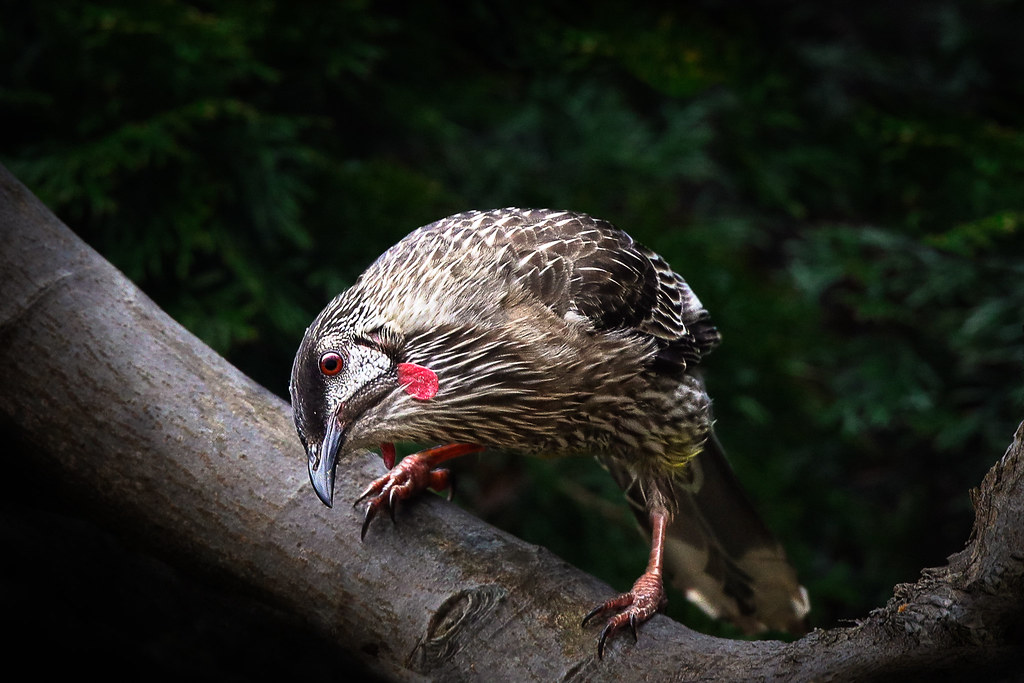#red wattlebird
Explore tagged Tumblr posts
Text

Todays bird of the day is the red wattlebird!
#im continuing with more honeyeaters yaaaay#also this is so late sorry#red wattlebird#Meliphagidae#honeyeaters#australian birds#bird of the day#birdblr#5
86 notes
·
View notes
Text
red wattlebird was being a bully . as usual. very handsome though


#birds#birding#ornithology#special interest#bird#bird photography#birdblr#australian birds#red wattlebird#meliphagidae
51 notes
·
View notes
Video
Curious Red Wattlebird by Graeme O'Rourke Via Flickr: This photo was captured in my backyard as this red wattlebird was perched in my Japanese Maple tree. Over the past 12 months it has learnt to trust me and this display I can only put down to this bird trying to ascertain if it was really me behind the camera as the very next capture shows it in a similar low-down pose, but this time looking from its left side. . .or maybe it was checking the brand and model of my camera. It is one of the largest nectar-feeding birds in the world and is the second largest species of honeyeater native to Australia, eclipsed by the yellow wattlebird which is found only in Tasmania. The red wattlebird has a long, specialized tongue to extract nectar from flowers. Its tongue can extend well beyond the tip of its bill, and it is divided at the end to form a brush-like structure with over a hundred bristles that soak up nectar by capillary action. The red wattlebird has mainly grey-brown plumage, red eyes, distinctive pinkish-red wattles** either side of its neck, white streaks on the chest and a large bright yellow patch on the lower belly. The male and female have similar plumage. (**A wattle is a fleshy caruncle from various parts of the head or neck in several groups of birds and mammals and those on the red wattlebird dangle from the lower rear corner of the ear coverts on either side of the neck.) The species is found in southeast Queensland, NSW, Victoria, South Australia and in the southwest of Western Australia, in open forest and woodlands, and is a common visitor to urban gardens and parks. Loud and conspicuous, the red wattlebird is generally found in trees, where it gets most of its food; occasionally it forages on the ground, feeding from a wide variety of flowering plants. Insects also comprise part of its diet. It is territorial and at times aggressive towards birds of other species, often defending rich sources of nectar. Breeding throughout its range, the red wattlebird builds a cup-shaped nest in a tree and raises one or two broods a year.
#wild bird#green#grey#gray#red wattlebird#red#white#yellow#feathers#bird's eye#eye#highlighted#exquisite capture#green conifer#wonderful detail#curious#curious red wattlebird#unusual behaviour#unusual behavior#LRCF2R5781-V12n#flickr#nature
13 notes
·
View notes
Text
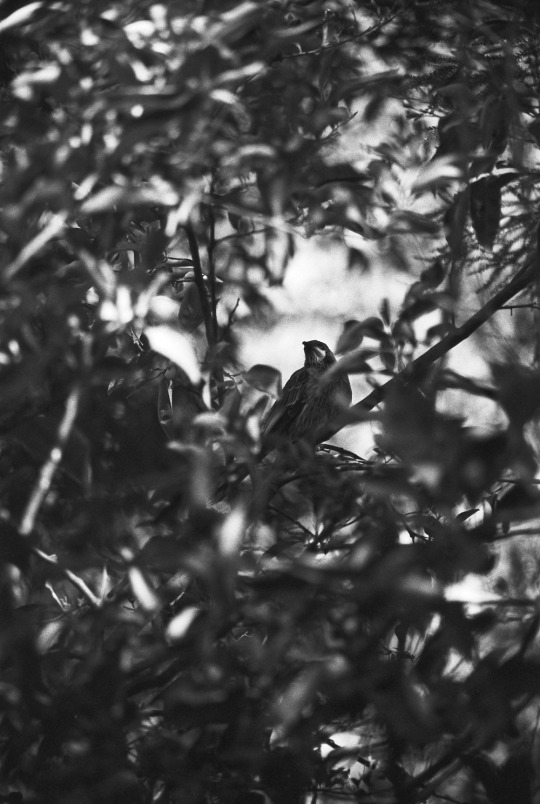
Red Wattlebird
Minolta XD-S, 200mm f4 Hp5+ (@ 1600), XTOL* Replenished
#film photography#b&w photography#hp5#35mm#red wattlebird#birds#*unholy blend of xtol replenished into xt-3
0 notes
Text
Warburton Red Wattlebird

View On WordPress
0 notes
Text
I love going to the local botanical gardens and being the Most Annoying Autistic alive
like I'm sorry but if a bird talks to me I am going to talk back these are Excellent Sound and I am going to Make Them
I have been honking at a goose for several minutes I'm having the time of my life
#lula's life#birds#I feel it's important to mention that I do in fact have a knack for mimicking bird sounds with decent accuracy#not all of them but a not insignificant amount#really impressed a guy once with my little wattlebird impression#he was trying to describe it to me so I could help ID it and we narrowed it down#to either little wattlebird or red wattlebird#I luckily had a lot of experience mimicking little wattlebirds because they frequent my parents garden#I'm also Very Good at goose honks
78 notes
·
View notes
Text
the wattlebird is a sweetpea
27 notes
·
View notes
Note
With Australian magpies it absolutely is a very specific season (september, while chicks are still helpless) and they're really quite chill outside of that. However not enough people talk about these little bastards, probably because they swoop other birds/dogs more than humans. But their tenacity is admirable.

Willie wagtails.
They will swoop while nesting, but will also swoop throughout the entire year for general territorial purposes/defending food. These are probably one of the most aggressive birds that exist that I can think of. They rarely if ever swoop people (though it does happen!), but will not hesitate to hassle your dog, and will also chase birds magnitudes larger than themselves. No one is safe from their wrath.




A little fun detail is that their white "angry eyebrows" will often flare up during aggressive displays.
I know you’re American but do you know how much swooping season is a real vs Internet phenomenon?
Australian magpies and several other bird species will dive bomb you if you’re near their nests if that’s what you’re asking.
#the noongar name for them is djiti-djiti#which is basically what their calls sound like AND its fun to say#so i love it#close contendor for aggro little bastards are red wattlebirds#i was going to include them but its hard to find pictures of them swooping other animals?? for some reason??#i swear they're some of the meanest birds out there. hate all other living things with a burning passion#but pictures to support that would be nice
57 notes
·
View notes
Text
Great Backyard Bird Off - Schedule & Info
Round One Schedule
Cosmopolitan - posted February 1st & 2nd - 14 polls
Europe - posted February 11th - 9 polls
Africa - posted February 20th - 9 polls
Australia - posted March 1st & 2nd - 20 polls
New Zealand - posted March 11th - 7 polls
Asia - posted March 20th & 21st - 14 polls
the Americas - posted March 29th & 30th - 16 polls
Eurasia - posted April 8th & 9th - 14 polls
Poll Info
There are 8 brackets, with 208 species featured! Ranges were determined either using the self-report feature added to the submission box or with eBird sightings. "Cosmopolitan" is a bracket involving species of birds which were found on at least three continents, regardless of which they were submitted for. "Eurasia" are birds which seem to appear equally between Europe and Asia (majority of the continent, not just Middle East). "the Americas" includes all of the Americas, with US birds removed- granted, some Canadian or Mexican birds can show up in the US, but they're not common enough backyard birds (imo) to have been disqualified.
Please-- feel free to advocate for whichever bird you vote for! I would love to get some more participation with this tournament, especially since this is a poll with popular bird species.
Polls will be a week long, and are tagged #Great Backyard Bird Off. All subsequent reblogs are tagged as #poll reblog. Be sure to block this tag if you want to avoid me spamming your dash. Any reblogs containing support for a species will be tagged #[species] support. Results will be tagged #poll results.
Bird Support Google Form
vvv Participant List under the Read More vvv
Cosmopolitan (28 species)
Black kite, Black-headed gull, Bohemian waxwing, Canada goose, Common buzzard, C. Chiffchaff, C. Kingfisher, C. Loon, C. Myna, C. Nightingale, C. Swift, Eurasian Collared-dove, Eurasian Hoopoe, Eurasian (Common) Kestrel, Eurasian Tree Sparrow, European bee-eater, European (common) starling, Great crested grebe, Great gray owl, Grey wagtail, Little grebe, Ring-necked pheasant, Red-backed Shrike, Rock Pigeon, Rose-ringed Parakeet, Western barn owl, Western cattle egret, White (pied) wagtail
Europe (18 species)
Tawny Owl, Spotless Starling, Red kite, Middle spotted woodpecker, Great spotted woodpecker, Fieldfare, European Stonechat, E. Robin, E. Herring Gull, E. Goldfinch, Eurasian Green Woodpecker, Eurasian Golden Oriole, Eurasian blackcap, Eurasian (Common) Blackbird, Dunnock, Crested tit, Common wood-pigeon, Eurasian Blue tit
Africa (18 species)
African Harrier-hawk, Bearded barbet, Blacksmith lapwing, Bokmakierie, Cape starling, Cape white-eye, Dark-capped bulbul, Hadada ibis, House bunting, Klaas' Cuckoo, Kwevoel (Grey go-away-bird), Nile valley sunbird, Purple-crested turaco, Red-winged starling, Southern double-collared sunbird, Southern masked weaver, Spotted eagle-owl, White-backed mousebird
Australia (41 species)
Yellow Wattlebird, Willie-wagtail, White-faced Heron, Welcome Swallow, Weebill, Tawny Frogmouth, Tasmanian Nativehen, Superb Fairywren, Sulfur-crested Cockatoo, Splendid Fairywren, Sooty Owl, Red-browed Firetail, Red wattlebird, Rainbow lorikeet, Peid currawong, Pheasant coucal, Pacific koel, Noisy miner, Masked lapwing, Magpie-lark, Little corella, Lewin's honeyeater, Laughing kookaburra, Grey fantail, Grey butcherbird, Gang Gang cockatoo, Galah, Eastern spinebill, Eastern rosella, Crimson rosella, Crested pigeon, Crescent honeyeater, Bush stone curlew (thick-knee), Brown thornbill, Black swan, Bell miner, Austarlian ringneck, Australian magpie, Australian Ibis (Bin Chicken), Australasian Swamphen (Pukeko)
New Zealand (14 species)
Kaka, Kakaruwai (South Island robin), Karearea (NZ falcon), Kereru, Koekoea (Long-tailed Koel), Korimako (NZ bellbird), Yellowhead, Piwakawaka (NZ Fantail), Riroriro (Grey Gerygone), Satin Bowerbird, Silvereye (Tahou), Titipounamu (Rifleman), Tomtit, Tui
Asia (28 species)
Asian Koel, Azure-winged Magpie, Black-collared Starling, Brown-eared Bulbul, Colombo (House) Crow, Common Hill-myna, Eastern Buzzard, Japanese Robin, Light-vented Bulbul, Mandarin Duck, Masked Laughingthrush, Olive-backed Sunbird, Oriental Magpie-robin, Oriental Pied Hornbill, Palau Fruit dove, Palla's Gull, Purple-rumped Sunbird, Red-billed Blue magpie, Red Junglefowl, Red-whiskered bulbul, Ruppell's Weaver, Southern Hill-myna, Spotted dove, Swinhoe's White-eye, Whistling Green-pigeon, White-rumped munia, White-spectacled bulbul, Yellow bittern
The Americas (33 species)
Austral Thrush, Bananaquit, Blue-and-white Swallow, Blue-and-yellow Macaw, Bushy-crested Jay, Canada Jay, Chalk-browed Mockingbird, Chimango, Clay-colored Thrush, Common Potoo, Crimson-fronted Parakeet, Eared Dove, Great Kiskadee, Great Thrush, Green-backed Firecrown, Green-headed Tanager, Hoatzin, Lesson's Motmot, Masked Water Tyrant, Pacific Hornero, Pale-breasted Thrush, Plain Parakeet, Red-rumped Cacique, Ruddy Ground Dove, Rufous Hornero, Rufous-bellied Thrush, Rufous-collared Sparrow, Russet-naped Wood rail, Sayaca Tanager, Southern House Wren, Southern Lapwing, White Bellbird, White-crested Elaenia
Eurasia (28 Species)
Black Redstart, Blue Rock thrush, Carrion Crow, Coal Tit, Common Chaffinch, Eurasian Bullfinch, Eurasian Bittern, Eurasian Jackdaw, Eurasian Jay, Eurasian Magpie, Eurasian Nuthatch, Eurasian Oystercatcher, Eurasian Siskin, Eurasian Sparrowhawk, Eurasian Treecreeper, Eurasian Wren, European Greenfinch, Goldcrest, Great Tit, Hawfinch, Hooded Crow, Long-tailed Tit, Mistle Thrush, Northern Lapwing, Rook, Song Thrush, Spanish Sparrow, Yellowhammer
#great backyard bird off#poll info#tbf this post is as much for me as it is for yall#i just need to get better at planning bc of school and all#but I really love running this blog#hopefully this poll is big enough to carry us through most of the year!
31 notes
·
View notes
Text
red wattlebird���❣

13 notes
·
View notes
Note
Hey! Thought I'd show you these photos of different birds I took when I went down to Mossy Point to stay with my uncle.
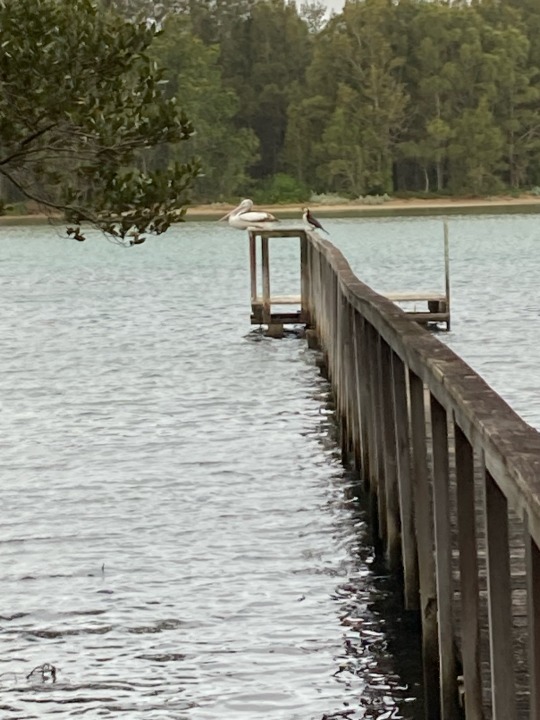
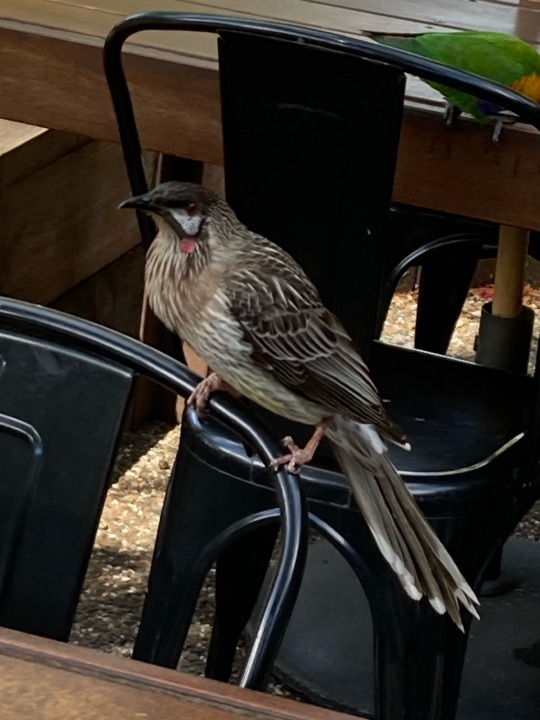

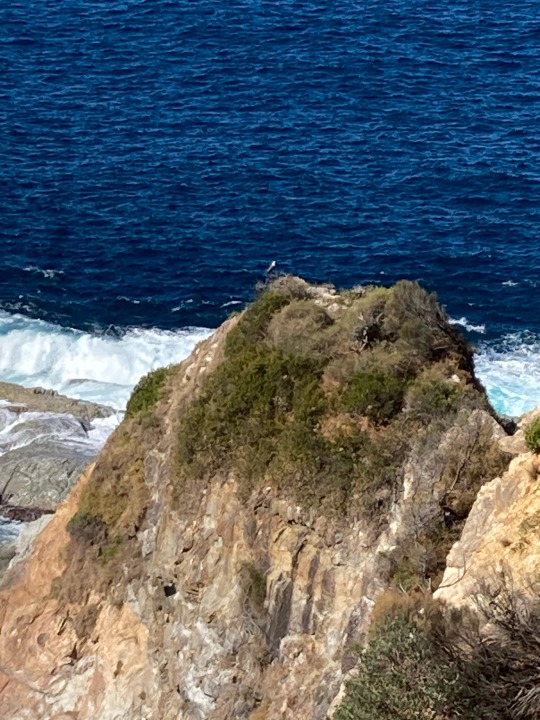
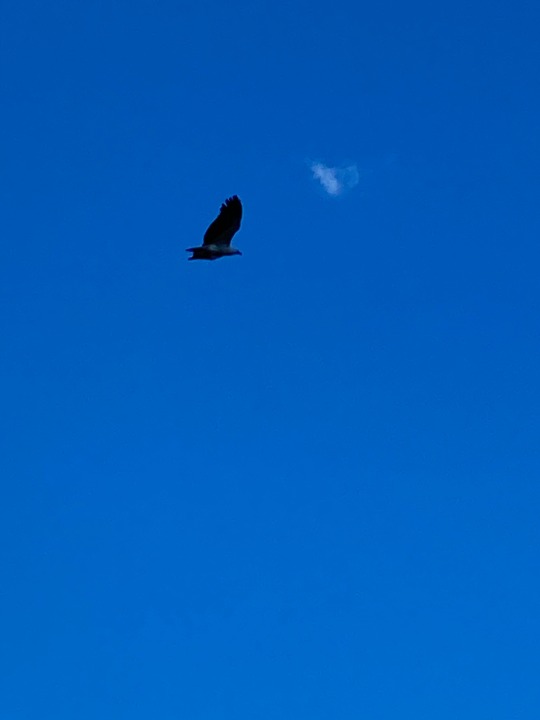
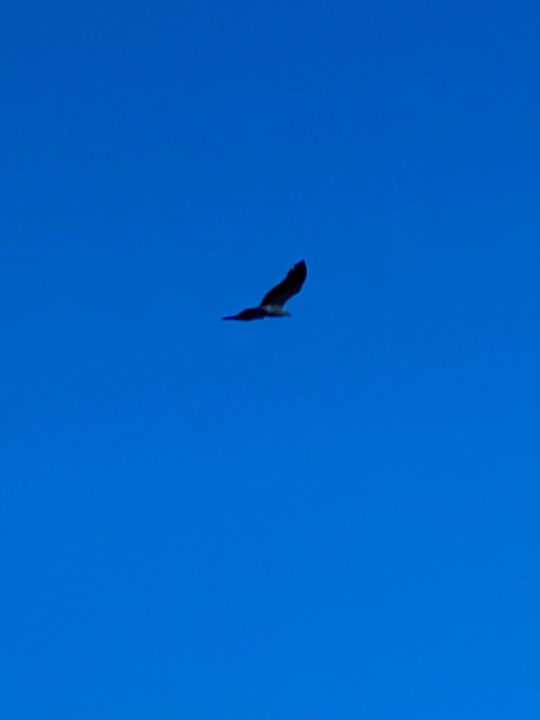
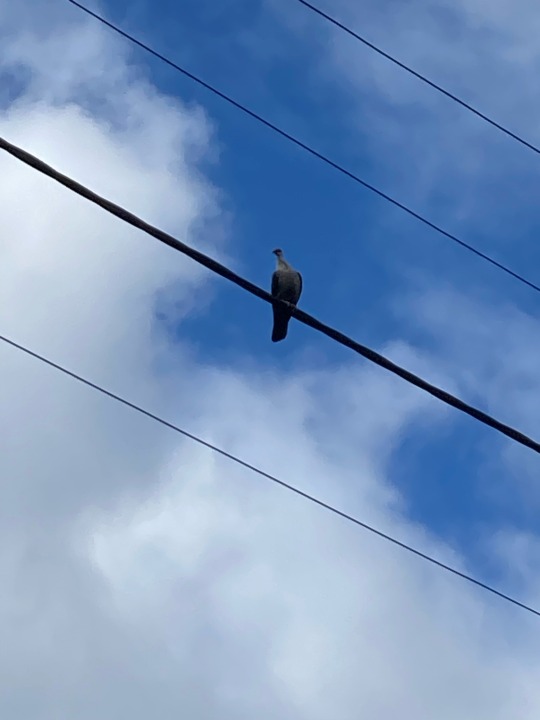
The first one is a pelican with a different type of bird, but I can't tell what it is. They were on a private jetty, so I wasn't allowed to get closer. It has a short orange beak. The other two are of a red wattlebird, the other three are of a sea eagle when we went to this lookout where we also saw seals and humpback whales, and the last one is this pretty large pigeon. I'm not sure if it's a white-headed pigeon or a different kind.
Anyways, I hope you like them!
what beautiful birds! i think the bird in the pelican picture is a pied cormorant / pied shag
100 notes
·
View notes
Text
I’m a red wattlebird because I don’t like the taste of my food
I’m a spotted hyena because I’m not sure what the heck is happening
I’m a werewolf because my friends don’t like me
…Damn okay lmao
new tag game: use predictive text to see why you are your theriotype/kintype. start with "i'm [x] because"
i'll go first
i'm a dog because i have to fight
940 notes
·
View notes
Text
Day 10 in Australia
We had a fab (though exhausting) day today visiting Wadjemup/Rottnest Island!
We had to get up early, but "luckily" the jetlag worked in my favor and I was awake before my 6am alarm. Wife was feeling almost entirely better. We managed to leave the flat just past 8am to walk to the ferry. It was very hot and humid, even at that hour, so we arrived at the harbor already very sweaty.
We took the 9am ferry out to the island. Wife and her sister sat inside the ferry. However, I wanted to be outside on the ferry, even though I was too late to get an outdoor seat. So I stood up for the entire half-hour ride, enjoying the cool wind (fucken wimdy) and the ocean views and air.
When we got off the ferry, we got our bikes and helmets. To my surprise, my bike was actually a good fit; I could sit on it with good posture, and changing gears was easy. The brakes were very squeaky, but it was otherwise perfectly rideable. We spent a little while getting oriented before picking up a snack. But on our way to the bakery for the snack, we saw a few quokkas! Two adults and a youngster who kept hopping pouncily onto its mother! They were just as cute as advertised!
So at that point, I already felt the visit was a success. But actually, the whole day was great.
What's great about visiting Wadjemup is that there are no cars allowed on the island, only bicycles and buses. So cycling is actually pretty safe. We cycled a total of nearly 12km, including some rolling hills; that's the most exercise we've had since we left home. We made lots of stops, of course. We looked at views, spotted a king's skink, took various photos, and rejected a few beaches before settling on Parakeet Bay. It was gorgeous, with lovely dunes, luxurious white sand, and clear turquoise water. But I hadn't brought a swimsuit, so I just rolled up my trouser legs and waded in up to my knees. Wife and her sister did more of a swim, but I returned to my bike and backtracked a bit to the shore of a lake we had passed, where I'd seen some birds.
I had a good concentrated half hour or so of birdwatching and identified Australian shelducks, banded stilts, pied stilts, a red-capped plover, something I think was a buff-banded rail, great crested terns, and a few things I need to check the photos of to see if I can figure out what they are. Several of those birds are new to me!
Then I met up with Wife and her sister, who were done at the beach. While waiting for them, I spotted a snake near the road! We looked it up later and I believe it was a dugite, which is of course (since this is Australia) very venomous! We continued our bike ride, passing some salt lakes (including one that was pink), a colony of huge numbers of great crested terns, and a "train" (more like an old-fashioned tram) on tracks.
Back near the Settlement, we spent a little while admiring the quokkas foraging in the leaf litter next to a mini-golf course, and finally went for a late lunch and a drink before returning our bikes and getting on the 4pm ferry back to Fremantle. Again, I stood outside. It was more crowded than the morning ferry had been, but there were also more waves.
We got home and showered and were horrified to discover we had all gotten sunburned! I had failed to reapply sunscreen and had missed some spots, but luckily most of my body was clothed. Wife did pretty well but the backs of her hands were badly burned, despite her having used sunscreen. Wife's sister was splotchily sunburned in many places!
We walked a bit of a ways to a "fish pub" for dinner. The food was great, and we were seated on a patio adjacent to a playground and large grassy area with a few trees around the edges, in which I spotted several interesting birds: galahs, a red wattlebird, ravens, magpies, and I'm pretty sure a pair of rainbow lorikeets flew past.
We walked home. The little kitty from yesterday was out front and Wife petted it, but then it followed us to our door! shit! It has a collar and a bell, so I assume it has a home. I felt terrible closing the door to prevent it from coming in!
10 notes
·
View notes
